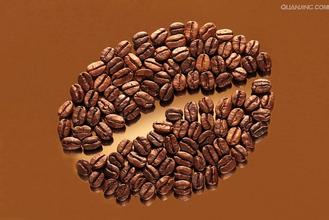Characteristics of Coffee Coffee utensils Blue Mountain Coffee Origin
Turkish coffee pot: popular in the Middle East in the early nineteenth century, people call it "evlik". Its appearance is about six inches high, capacity is about three to four people, long handle, mostly made of pure copper or brass, a few have internal tin plating treatment. Naples Turners: In the mid-19th century (around 1860), the French invented a relatively simple "filter coffee", which was not widely used in Italy until 1950, and the Italians called it "Naples Turners". It consists of two round cylindrical pots, one stacked on top of the other, one with a spout and a filter sieve box with holes in the middle. Vienna coffee pot: At the end of the 19th century, the use of vacuum principle invented the "Vienna coffee pot"(also known as "Belgian coffee pot"), that is, the use of alcohol lamp to burn coffee powder and water, boiling heat generates pressure, coffee powder mixture through the connection between the two containers of vacuum tube flow into the glass container, and finally the brewer under the alcohol lamp removed, and then use the vacuum principle to extract coffee from the brewer, open the gate when drinking, filled with people can enjoy the cup. Filter: In the early 20th century, a simple design "filter" appeared, using the punching principle, just like the tea filter used when making tea, the coffee powder was placed at the bottom of the appliance by the main shaft and a very fine dense net, plus a slight cooling of boiling water, back and forth punching, about five minutes or so, coffee liquid will be extracted. Glass vacuum pot: As early as 1840, Scottish naval engineer Robert Napier invented the prototype of siphon coffee pot. It consists of two spherical glass containers. The upper layer holds ground coffee powder, and the lower layer holds hot water. Steam pressure is generated by burning the lower container with an alcohol lamp, and water rises to the upper container through a vacuum tube between the two containers to mix with coffee powder. After a few minutes, the fire is removed, and the lower layer produces a siphon effect due to the temperature drop, and the coffee liquid is pumped to the lower container. The mid-and late twentieth century-now coffee has become an indispensable drink in the daily life of the masses in the heyday of the era, this period is the heyday of the development of coffee pots, a large number of inventions, electric coffee machines also entered our sight at this time. Drip pot: In the mid-20th century, drip pots were popular in restaurants (especially France) and ships. Simple structure, a small cylindrical mug-like metal container, the bottom has a small hole to allow coffee to filter drops to the container, the container has a flat and very fine filter. Filter paper dropper: German Melitta Bentz invented filter paper dropper, which also uses filter dropping method, but it is more in line with modern people's environmental protection concept and health awareness. The classification of filter paper drippers on the market is: one hole at the bottom and three holes at the bottom. Electric coffee machine: Electric coffee machine originally has three forms: percolating type, dripping type and vacuum type. Percolation type is an early product, low price but inconvenient to use, poor reliability; vacuum brewing coffee taste strong, but prone to failure. In 1965, Philips invented the first drip coffee pot, and its performance in all aspects was widely recognized. History entered the era of drip coffee pot dominance. Drip coffee makers include regular coffee makers that only make coffee grounds, two-in-one coffee makers that grind their own coffee beans, and Italian steam coffee makers that make milk bubbles

Important Notice :
前街咖啡 FrontStreet Coffee has moved to new addredd:
FrontStreet Coffee Address: 315,Donghua East Road,GuangZhou
Tel:020 38364473
- Prev

What are the types of coffee grade coffee
Java, named after the island of production, is produced in Indonesia, also known as Romsda. Features: with a unique wheat flavor, mild and bitter taste, born with mysterious, strong temperament, caffeine content is twice that of ordinary coffee, Java coffee can quickly eliminate fatigue and active thinking ability. Mocha, named after the place of production, is produced in the Arab ports of Africa, also known as the Ethiopian feature:
- Next

Costa Rican coffee producing area Costa Rica coffee growth pattern
High-quality Costa Rican coffee is called extra hard beans, and this kind of coffee can grow at an altitude of more than 1500 meters. Altitude has always been a problem for coffee growers. The higher the altitude, the better the coffee beans, not only because the higher altitude can increase the acidity of the coffee beans and thus increase the flavor, but also because the night temperature at the higher altitude is lower, which can make the trees grow slowly.
Related
- Does Rose Summer choose Blue, Green or Red? Detailed explanation of Rose Summer Coffee plots and Classification in Panamanian Jade Manor
- What is the difference between the origin, producing area, processing plant, cooperative and manor of coffee beans?
- How fine does the espresso powder fit? how to grind the espresso?
- Sca coffee roasting degree color card coffee roasting degree 8 roasting color values what do you mean?
- The practice of lattes: how to make lattes at home
- Introduction to Indonesian Fine Coffee beans-- Java Coffee producing area of Indonesian Arabica Coffee
- How much will the flavor of light and medium roasted rose summer be expressed? What baking level is rose summer suitable for?
- Introduction to the characteristics of washing, sun-drying or wet-planing coffee commonly used in Mantenin, Indonesia
- Price characteristics of Arabica Coffee Bean Starbucks introduction to Manning Coffee Bean Taste producing area Variety Manor
- What is the authentic Yega flavor? What are the flavor characteristics of the really excellent Yejasuffi coffee beans?

